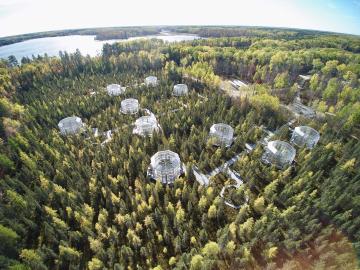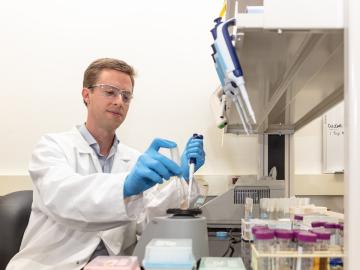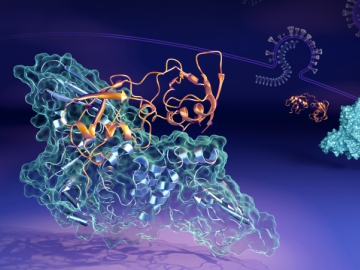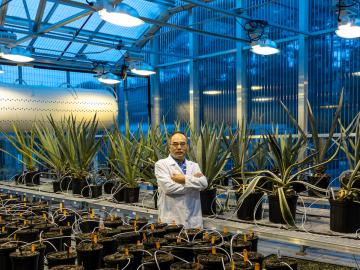
Filter News
Area of Research
- Advanced Manufacturing (6)
- Biological Systems (1)
- Biology and Environment (35)
- Computational Biology (1)
- Computational Engineering (2)
- Computer Science (1)
- Energy Science (66)
- Fusion and Fission (4)
- Fusion Energy (4)
- Isotopes (2)
- Materials (30)
- Materials for Computing (6)
- Mathematics (1)
- National Security (1)
- Neutron Science (46)
- Nuclear Science and Technology (6)
- Supercomputing (22)
News Topics
- (-) Advanced Reactors (10)
- (-) Bioenergy (26)
- (-) Biomedical (20)
- (-) Composites (11)
- (-) Energy Storage (31)
- (-) Environment (64)
- (-) Frontier (6)
- (-) Neutron Science (52)
- 3-D Printing/Advanced Manufacturing (47)
- Artificial Intelligence (20)
- Big Data (13)
- Biology (24)
- Biotechnology (6)
- Buildings (13)
- Chemical Sciences (7)
- Clean Water (14)
- Computer Science (81)
- Coronavirus (10)
- Critical Materials (9)
- Cybersecurity (13)
- Exascale Computing (5)
- Fusion (18)
- Grid (18)
- High-Performance Computing (19)
- Isotopes (19)
- ITER (4)
- Machine Learning (6)
- Materials (32)
- Materials Science (53)
- Mathematics (1)
- Mercury (7)
- Microscopy (20)
- Molten Salt (5)
- Nanotechnology (25)
- National Security (7)
- Nuclear Energy (34)
- Physics (18)
- Polymers (12)
- Quantum Computing (5)
- Quantum Science (25)
- Security (12)
- Space Exploration (10)
- Statistics (1)
- Summit (20)
- Transportation (40)
Media Contacts

Scientists at ORNL and the University of Wisconsin–Madison have discovered that genetically distinct populations within the same species of fungi can produce unique mixes of secondary metabolites, which are organic compounds with applications in

Scientists at ORNL and the University of Tennessee, Knoxville, have found a way to simultaneously increase the strength and ductility of an alloy by introducing tiny precipitates into its matrix and tuning their size and spacing.

Scientists studying a unique whole-ecosystem warming experiment in the Minnesota peatlands found that microorganisms are increasing methane production faster than carbon dioxide production.

In a step toward increasing the cost-effectiveness of renewable biofuels and bioproducts, scientists at ORNL discovered a microbial enzyme that degrades tough-to-break bonds in lignin, a waste product of biorefineries.

As rising global temperatures alter ecosystems worldwide, the need to accurately simulate complex environmental processes under evolving conditions is more urgent than ever.

Scientists at Oak Ridge National Laboratory have uncovered how the SARS-CoV-2 virus evades the human immune system by studying the interaction between a viral protein (PLpro) and a key immune protein (ISG15). These insights could guide the development of therapeutic drugs to block this interaction, enhancing the body’s ability to combat the virus.

An ORNL-led team comprising researchers from multiple DOE national laboratories is using artificial intelligence and computational screening techniques – in combination with experimental validation – to identify and design five promising drug therapy approaches to target the SARS-CoV-2 virus.

Six science and technology innovators from across the United States will join the fifth cohort of Oak Ridge National Laboratory’s Innovation Crossroads program in June.

ORNL’s Zhenglong Li led a team tasked with improving the current technique for converting ethanol to C3+ olefins and demonstrated a unique composite catalyst that upends current practice and drives down costs. The research was published in ACS Catalysis.

Scientists at ORNL have discovered a single gene that simultaneously boosts plant growth and tolerance for stresses such as drought and salt, all while tackling the root cause of climate change by enabling plants to pull more carbon dioxide from the atmosphere.


